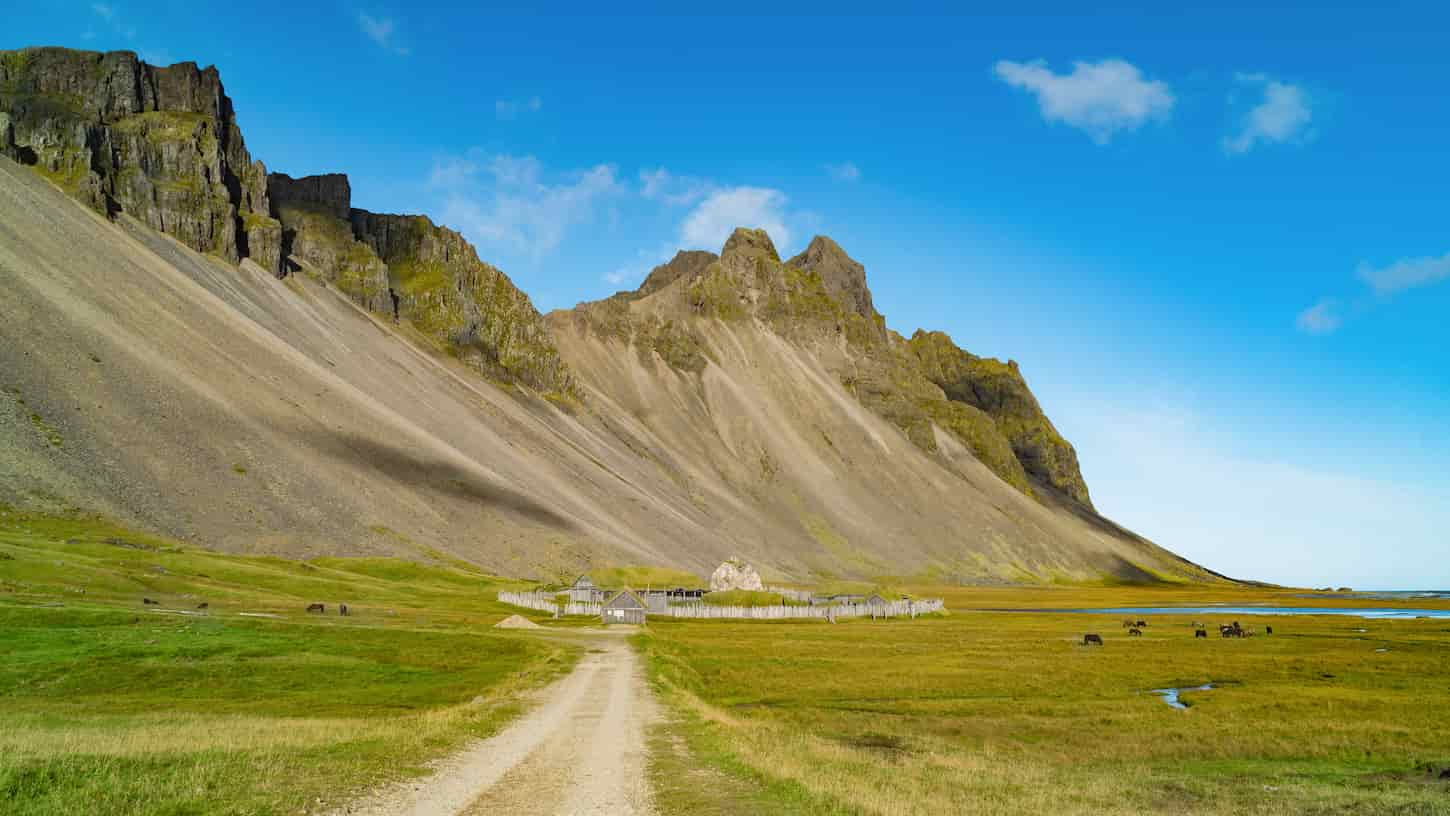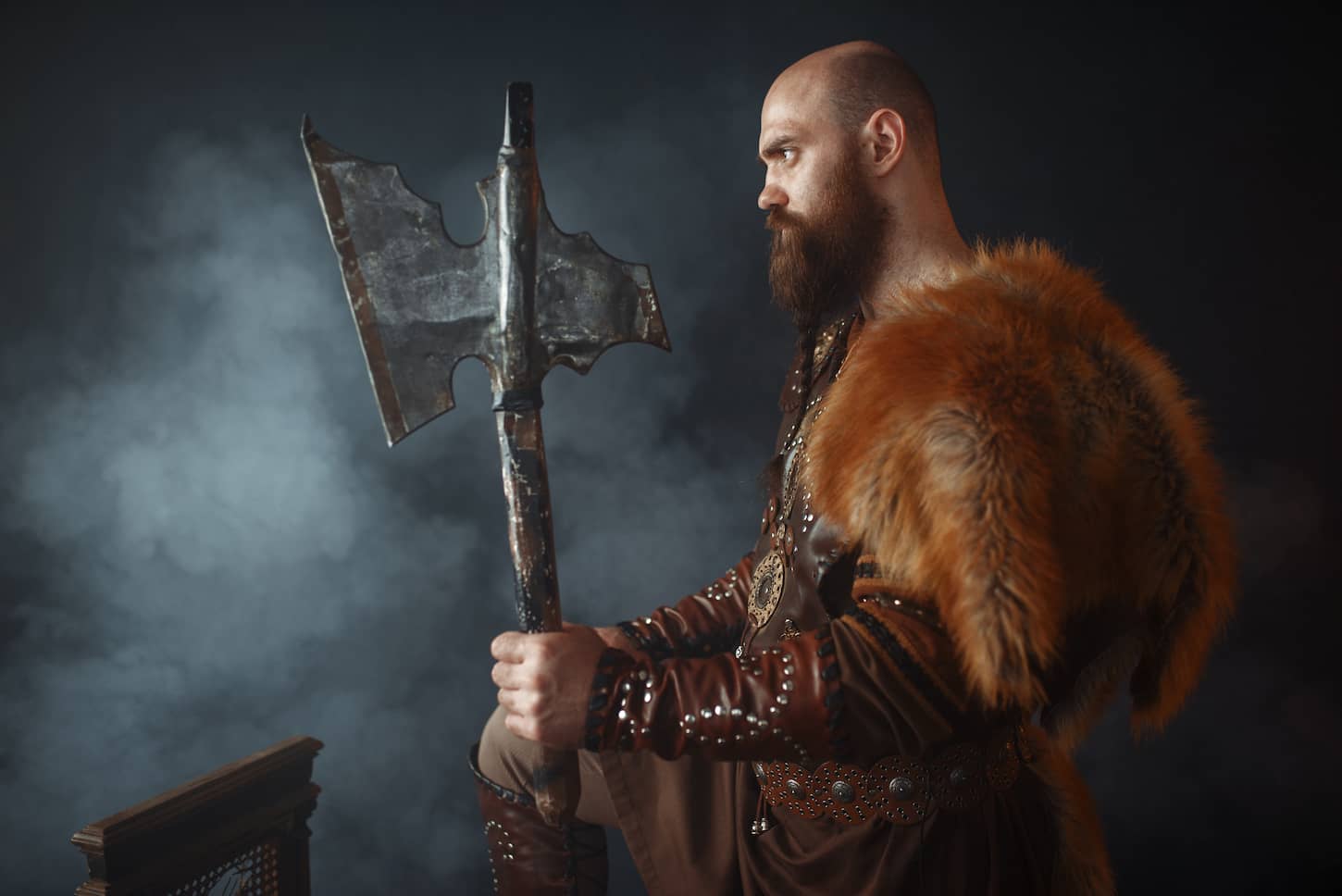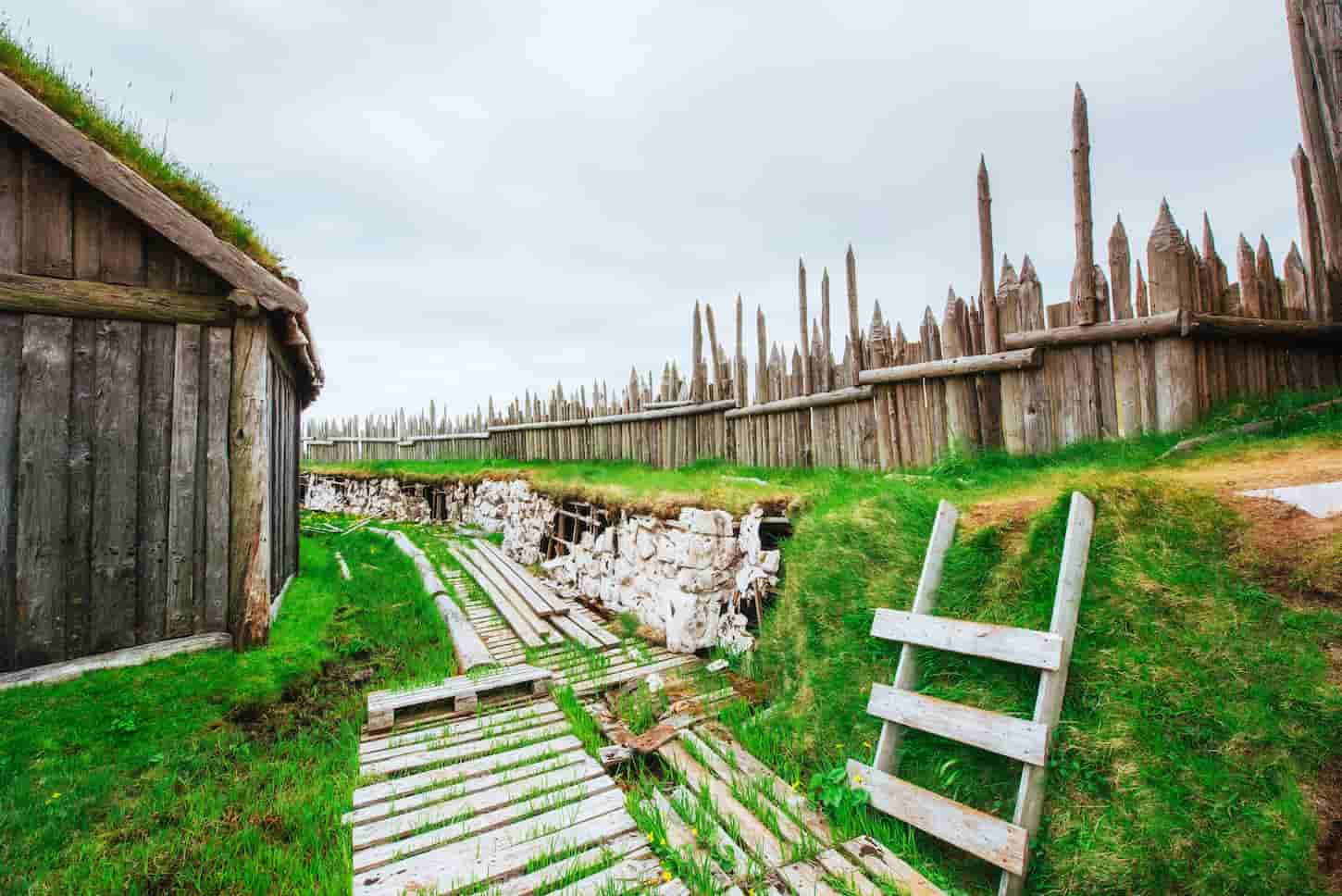The Vikings were a group of seafaring warriors. At their peak, they had territories spreading from Turkey to Canada, and they frequently intermarried with the locals. So, Viking bloodlines can be found all over the world. And if you have a sneaking suspicion that you might have Viking heritage, you might be wondering how to find out.
To find out if you have Viking heritage, first, you should start a family tree. You can do this using online ancestry sources or via your local records office. Additionally, you can do a DNA test to see where your ancestors came from.
The Vikings were an incredible group of people known for their intelligence and bravery. And many of us find the thought of having Vikings for ancestors pretty exciting. So if you want to find out if you have Viking heritage, take a look at our comprehensive guide below.

Who Were the Vikings?
The Vikings were also known as the Norsemen or North Men. They were skilled seafarers, farmers, and warriors that originated in the Nordic regions of Northern Europe. The Vikings were so influential that the years 793 to 1066 AD are known as the Viking Age.
Today, we know the Nordic regions of Europe as Scandinavia. And this includes the countries Denmark, Sweden, Finland, Iceland, and Norway. But during the Viking times, these countries didn’t exist. Instead, the Vikings lived in lots of separate groups under the rule of a chieftain. And often, these groups would go to war with each other.
In around 790 AD, groups of Vikings started venturing out on raiding expeditions across Europe. They were expert sailors who traveled in special longboats that they could moor on any shore. And in addition to this, they were tactical fighters and brave, skillful warriors. So, it wasn’t long until they conquered lots of lands.
Their raids on England, Ireland, Scotland, and the Baltic regions of Europe and Russia were particularly successful. And masses of Vikings settled in these areas, and they were unconquered for almost 200 years.
The meaning of the word Viking is unclear. But most historians suggest it probably meant sea explorer or pirate. However, despite their fierce reputation, the Vikings weren’t barbarian pirates. They were good traders, and negotiators and were very loyal people with a good sense of morality
What Language Did the Vikings Speak?
The Vikings spoke in Old Norse which stems from the Germanic family of languages. Old Norse is a language that dates to the 8th century. However, the Vikings from different regions would have had their own local dialects of Old Norse.
The Vikings didn’t keep a lot of written records. Instead, they passed on their beliefs and traditions orally. And they only wrote down the most significant events in their history. When they did write things down, they used an alphabet of runes.
The Vikings would have become multilingual as they settled in different countries. And as they spread out, their language became more and more fragmented. And eventually, it turned into new languages such as Danish, Swedish, and Norwegian.
Old Norse and Old English were quite similar. And you can still find lots of Old Norse words used in modern-day English, such as egg, knife, take, and husband.

How do I Know if I Have Viking DNA?
Vikings weren’t a race of people. This means that there isn’t a specific Viking gene. However, the original Vikings mostly came from Scandinavia. So, if you have Scandinavian DNA this could be a sign that you have Viking heritage.
But Scandinavian DNA isn’t the only link to Viking heritage. The Vikings also had large settlements in the British Isles and the Baltic regions. So, DNA links to these areas may also suggest that you could have Viking ancestors.
One way to find out if you have Scandinavian DNA is by taking a DNA test to discover your haplogroup. If you have haplogroup R1a, R1b, or L1, this means that you may have Scandinavian heritage.
- Group R1a – This is mostly found in the eastern European and Baltic regions.
- Group R1b – Is found in Ireland, Scotland, Wales, France, and Northern Spain.
- Group L1 – Generally comes from Norway, Sweden, Finland, Denmark, and Iceland.
What Blood Type Were the Vikings?
Vikings likely had blood types of A+ or O+, though it’s hard to say for sure just exactly what blood type the Vikings were.
Blood Group A+ is the most common blood type in Scandinavian countries today. However, in Iceland and other heavily populated Viking areas like Ireland, the dominant blood group is O+.
So, while we don’t know exactly what blood types Vikings have, A+ and O+ are good guesses based on science.
How do I Find a Genealogical Paper Trail to the Vikings?
The Vikings originated in the Scandinavian regions. But they also had a large population in the British Isles, Eastern Europe, and Russia. The first thing to look at in family records is whether your family immigrated from any of these areas.
If you want to follow a genealogical paper trail, you should start up a family tree. You can do this by using the many family search resources that are available online. As well as this, you can visit your local library or records office.
Need a way to keep track of your family history? Make sure you check out our article on the best family history software by price and usability here!
Other helpful resources when it comes to discovering paper records for your Viking heritage include:
- Passenger Records – If your Scandinavian relatives arrived in the USA as immigrants, you should be able to find their passenger records. You can do this on the USA national archives website.
- Social Clubs – Scandinavian immigrants to the USA started up their own social clubs. These include the Sons of Norway, the Danish Brotherhood, and the Swedish Vasa Order. The clubs still exist today and hold lots of records about their members.
- Church Records – When people arrived in the USA from Scandinavia, they also formed churches. And here, they kept records of all birth marriages, and deaths. Eventually, the churches merged into the Evangelical Lutheran Church in America (ELCA). This church still exists, and they have lots of historical archives about their Scandinavian congregations.
- Family Surnames – A lot of Viking surnames still exist today. So, if you have a Viking surname or find Viking surnames in your family tree, this is a good indicator you have Viking heritage.
Wait – Viking surnames? You bet.

What are Some Viking Surnames?
A recent study by The Center of Nordic Studies and the History Channel revealed a comprehensive list of surnames that would certainly indicate that you have Viking heritage. Popular modern-day Viking names include MacDowell, Doyal, and Henderson.
The Vikings used patronymics when it came to naming their children. This means that a child would be known as the son of or the daughter of the father. For example, the name Iverson would mean the son of Ivor. So, if you have “son” or “sen” somewhere in your surname, this could be a hint at Viking heritage.
Here are some examples of Viking patronymic names:
- Iverson
- Henderson
- Peterson
- Paulson
Another way that the Vikings liked to name each other was through physical or personality traits. And examples of these types of Viking surnames include:
- Tallman
- Loveman
- Goodman
- Wiseman
Viking surnames are found a lot in Ireland and Scotland. And in Gaelic “mac” means son. So most Irish and Scottish surnames with the Mac most likely come from Viking heritage. Examples of Galic/Viking surnames include:
- Doyal
- Higgins
- McBirney
- McDowell
- McAuliffe
- McAuley
- McLeod
- Rogers/Rogerson
- Randall
And over in Scandinavia, some surnames that are linked directly to the Vikings include:
- Flett
- Heddle
- Scarth
- Halcro
These are, by no means, an exhaustive list. But it should let you see that a lot of names have ties back to Viking heritage.
What Heritage are Vikings?
The Vikings were predominantly from the Nordic regions of Europe, today known as Scandinavia. So generally speaking, they have a Nordic heritage. However, recent studies reveal that the Vikings’ heritage is a lot more diverse than we originally thought.
In 2020 Nature Journal published the results of a six-year study that investigated Viking DNA. During the studies, scientists took samples from the remains of 442 people from the Viking era from over 80 sites across Europe and Greenland.
The results of the studies were unexpected. They showed that Vikings weren’t a group of genetically-related people. Instead, they were a very mixed group of individuals. And their heritage also had links to North Germanic people, the Sami, and the Celts.
So, this means that people without a Nordic heritage were openly adopted and accepted into Viking culture. So overall, to be a Viking had nothing to do with where you came from or genetic features. Instead, it was more of a cultural movement.

How did Vikings Actually Look?
Film and movies always portray the Vikings as strapping, blonde, blue-eyed individuals. However, recent studies in Nature also revealed that our stereotypical view of the Vikings may not be accurate. They showed that there were lots of Vikings with dark features too.
Blonde hair and blue eyes were certainly common among the Vikings. But there were also lots of dark-haired and dark-eyed Vikings. And many of the Vikings from Denmark appear to have had red hair.
The Vikings were well dressed and, contrary to common belief, they didn’t wear horned helmets. Their clothes were made from intricately woven animal skins and wool, and they wore gold and silver jewelry. It seems like the Vikings were well-groomed, clean, and hygienic. And written accounts from the time tell us that the Vikings liked to wear dark eye makeup.
We can tell from Viking skeletons that the Viking women had a very square jawline, and the men had a more feminine shape. So, this means that the male and female Vikings would have looked quite similar.
Who Are the Descendants of the Vikings Today?
People from Scandinavia are the closest descendants of Vikings today. However, the Vikings have descendants all over Europe, particularly in Britain and Ireland. And from here, the descendants of the Vikings spread out across the rest of the world.
Approximately 6 percent of the British population are thought to be descendants of the Vikings. This increases to 29 percent and 24 percent in the Shetland and Orkney Islands in Scotland.
Over in Ireland, The Irish DNA project from 2017 suggested that up to 20 percent of the Irish population may have Viking DNA. However, taking more recent studies into account, the figure is more likely to be around 6 percent.
Overall, these figures aren’t that far from the 10 – 20 percent of Viking descendants thought to be living in Scandinavia today.
The studies also suggest that the Vikings from the different regions of Scandinavia spread out in different directions. The Vikings from modern-day Norway traveled to Scotland, Ireland, Iceland, and Greenland. The Danish Vikings predominantly went to England and the Vikings from the area of Sweden generally occupied the Baltic regions.

Do Vikings Still Exist in 2021?
According to the many websites dedicated to Viking culture, Vikings certainly do still exist today. There are plenty of people who follow a traditional Viking lifestyle and who call themselves Vikings.
According to modern-day Vikings, you don’t have to be from Scandinavia or dress in traditional Viking clothes to be considered a Viking. Anyone can be a Viking if they practice the virtuous traits of the Vikings. For example, this means being brave, disciplined, loyal, and standing up for injustice.
Over in Norway and Sweden, there are quite a few Viking villages constructed using Viking materials and building methods. Here, the people live as close as they possibly can to the traditional Viking way of life. They wear homemade Viking clothes, eat Viking food, and sometimes even have battle reenactments.
If you’d like to search for a modern-day Viking order, results that may come up include a variety of Danish, Swedish, or non-country-specific orders and brotherhoods found around the world.
Conclusion
These days, discovering your Viking heritage has never been easier. You can use a range of online resources or look for Viking family links, or you can take a DNA test. However, the Vikings weren’t a set of genetically related people. They were incredibly diverse. So, a DNA test won’t reveal a definite Viking gene.
But it can help you discover (or rediscover) a love of genealogy and family history. And we’re here to help you answer all your genealogy questions.
To get you started on your next steps in genealogy, make sure you read this article on the best genealogy tests next. The answers will surprise you – and help you get better answers than some of the generic tests alone could ever do!
Resources
When learning about genealogy, it’s important to learn from various reputable sources. These are the sources used in this article and our research to be more informed as genealogists.
- Blakemore, Erin. “Scientists Raid DNA to Explore Vikings’ Genetic Roots.” History, 3 May 2021, nationalgeographic.com/history/article/scientists-raid-viking-dna-explore-genetic-roots.
- “Can You Find Out If You Have Viking Heritage?” Living DNA, 27 Jan. 2021, livingdna.com/blog/viking-heritage.
- Curry, Andrew. “‘Viking’ Was a Job Description, Not a Matter of Heredity, Massive Ancient DNA Study Shows.” Science.Org, www.science.org/content/article/viking-was-job-description-not-matter-heredity-massive-ancient-dna-study-shows.
- Dammann, Mike. “What Were the Blood Types of the Vikings?” Rh Negative Blood and People, 21 Nov. 2019, www.rhesusnegative.net/staynegative/what-were-the-blood-types-of-the-vikings.
- “How to Find out If You Have Irish Viking Ancestry.” IrishCentral.Com, 30 Sept. 2021, www.irishcentral.com/roots/genealogy/irish-viking-ancestry-dna.
- “How to Find out If You Have Viking Ancestry.” VikingRune.Com, www.vikingrune.com/2018/06/how-to-find-out-if-you-have-viking-ancestry. Accessed 26 Oct. 2021.
- “Irish Vikings.” Sons of Vikings, 3 Jan. 2018, sonsofvikings.com/blogs/history/irish-vikings-descendants-of-the-viking-invasions.
- Kjølberg, Tor. “Language of the Vikings.” Daily Scandinavian, 14 May 2019, www.dailyscandinavian.com/language-of-the-vikings.
- Lall, G.M., Larmuseau, M.H.D., Wetton, J.H. et al. Subdividing Y-chromosome haplogroup R1a1 reveals Norse Viking dispersal lineages in Britain. Eur J Hum Genet 29, 512–523 (2021). https://doi.org/10.1038/s41431-020-00747-z
- McKay, Andrew. “Viking Runes: The Historic Writing Systems of Northern Europe.” Life in Norway, 9 Mar. 2021, www.lifeinnorway.net/viking-runes.
- “New Study: If You Have One of These Surnames There’s a Viking in Your Family Tree – The Vintage News – Geo Gen.” Geo Gen, 9 Jan. 2020, geogen.org/new-study-if-you-have-one-of-these-surnames-theres-a-viking-in-your-family-tree-the-vintage-news.
- “Passenger Arrival Lists.” National Archives, 7 Jan. 2021, www.archives.gov/nyc/finding-aids/passenger-lists.html.
- Peterson, Irene. “What Vikings really looked like.” ScienceNordic.com, 2 Jan. 2020, sciencenordic.com/archaeology-denmark-history/what-vikings-really-looked-like/1374457.
- Rebecca. “Viking Eyeliner from Sea to Sea – Medieval Studies Research Blog: Meet Us at the Crossroads of Everything.” University of Notre Dame, 18 Oct. 2019, sites.nd.edu/manuscript-studies/2019/10/18/viking-eyeliner-from-sea-to-sea.
- Rye, Eleanor. “What can linguistics tell us about the Vikings in England?” ScienceNordic.com, 5 Mar. 2017, sciencenordic.com/society–culture-vikings/what-can-linguistics-tell-us-about-the-vikings-in-england/1443242.
- “Scottish Vikings.” Sons of Vikings, 13 Apr. 2018, sonsofvikings.com/blogs/history/vikings-in-scotland.
- Strand, Daniel, and Anna Källén. “I Am a Viking! DNA, Popular Culture and the Construction of Geneticized Identity.” Taylor & Francis, 31 Jan. 2021, tandfonline.com/doi/full/10.1080/14636778.2020.1868988.
- Swayne, Anna. “Are You Part Viking?” Ancestry Blog, 11 July 2018, blogs.ancestry.ca/cm/are-you-part-viking.
- “The Rus of Kiev and the Varangians.” Sons of Vikings, 13 Mar. 2018, sonsofvikings.com/blogs/history/vikings-in-russia-the-rus-of-kiev-and-the-varangians.
- “Viking | History, Exploration, Facts, & Maps.” Encyclopedia Britannica, www.britannica.com/topic/Viking-people. Accessed 26 Oct. 2021.
- Wu, Tara. “Sweeping DNA Survey Highlights Vikings’ Surprising Genetic Diversity.” Smithsonian Magazine, 18 Sept. 2020, www.smithsonianmag.com/smart-news/dna-analysis-reveals-vikings-surprising-genetic-diversity-180975865.

